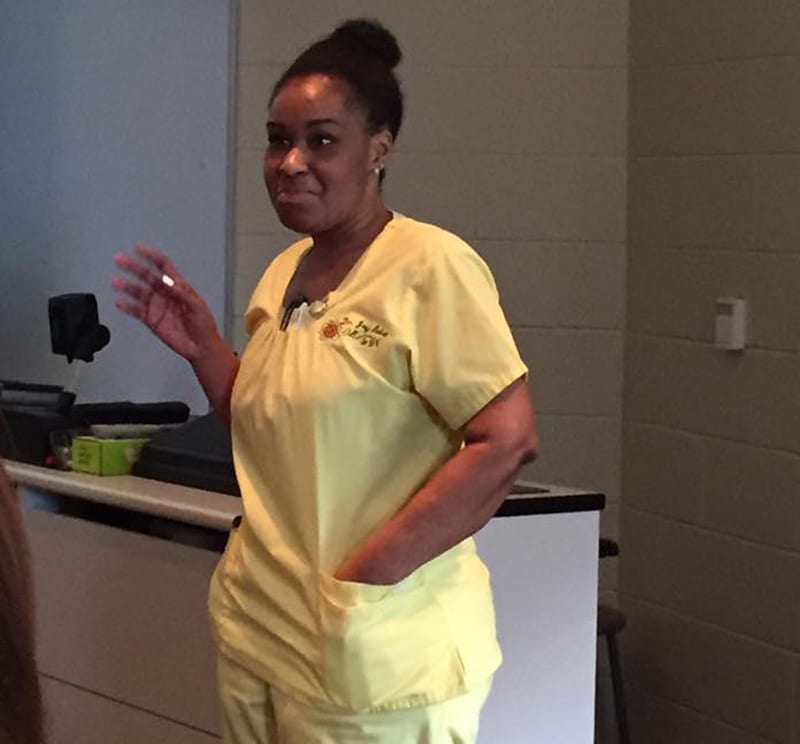Lamar County Leaders Partner to Promote Women’s Health and Healthy Birth Weight
Print This Post
by Diana St. Lifer
Data doesn’t always tell the whole story. In Lamar County, for example, there was an increase in low birthweight (LBW) babies from 13.8% in 2016 and 2017 to 18%—a decade high—in 2018. Then it dropped to 9.7% in 2019—the lowest it had been since 2013. But there’s more to these numbers than meets the eye.
Since 2004, the county’s LBW rate has been lower than the state’s just twice—in 2013 and 2019. The initial success came three years after Lamar County Family Connection became part of Georgia Family Connection Partnership’s Promoting Women’s Health and Healthy Births Cohort (formerly Low Birthweight Prevention Cohort). The Collaborative made concerted efforts through programming and education to promote the health and well-being of mother and child.
Sherry Farr, nurse manager in Lamar County, noted that while there are many aspects to the story of LBW babies (less than 5.8 pounds) in the county, the programming has been working.
“People are more informed about their health, particularly our young women of childbearing age,” said Farr. “I’m also seeing fewer women who are smokers and more who are better at managing their stress.”

The 2013 success was followed by five years of high LBW rates, despite continued efforts to educate and provide resources to promote healthy pregnancies. There were 40 LBW babies in the county in 2018, representing 18% of births that year.
“We’ve talked about it a lot during our strategy meetings and tried to figure out the cause,” said Kellie Mercer, the Collaborative’s executive director. An increase in preterm babies born before the 37th week of pregnancy, as well as multiple births, may have attributed to the increase. Six sets of twins were among the county’s 230 births in 2018, and six of those babies were LBW.
“If twins are born LBW, it has a major impact on the percentage rate, especially if there aren’t a large number of births in the county that year,” Mercer said. “We know that’s not the only cause, but it makes a large impact.”
According to Farr, having an adequate amount of time between births is a major factor in preventing LBW births, as mothers who had a LBW baby are more likely to have another if they become pregnant soon after that birth.
“We educate new moms on the importance of being healthy and waiting the proper amount of time before they have another baby,” said Farr. “It would be interesting to see if some of those high numbers were a second birth right after a previous one.”

Delving into what causes the number of LBW babies to fluctuate drastically from one year to the next is a challenge, particularly when factors often beyond anyone’s control can have an impact. For instance, a birthing center closing, facilities not accepting Medicaid, and a global pandemic can greatly impact outcomes.
Those involved in the Promoting Women’s Health and Healthy Births Cohort stay focused on the work because they know what’s at stake—health issues that can reach well into adolescence, resulting in long-term health care and associated costs.
LBW babies are more likely to suffer from chronic lung disorders or heart conditions, and LBW is a leading cause of infant mortality. According to the Georgia Budget and Policy Institute, the state ranks fourth in LBW and has the seventh highest rate of infant mortality in the country.
While the impact COVID-19 has had on births in Lamar County is still unknown, Farr didn’t track an uptick in births in 2021. “With people being home in 2020, I thought we were going to see more babies, but that didn’t happen,” she said. “We may have actually had less babies born.”
The Collaborative continues to provide maternal education and resources funded by Kaiser Permanente. Plans also were underway to restart the nurse home visitation program, which had been on hiatus for two years—first because there was no nurse available and then because of COVID-19.
“During the pandemic there was no one going into homes to give women the information they needed, and that personal touch goes a long way,” Farr said. “It makes such a difference in their lives. It makes the moms feel like somebody cares.”
While COVID-19 had disrupted some efforts, others improved during the pandemic—such as increased participation in the Women, Infants and Children (WIC) Nutrition Program after the office went completely virtual. “That’s awesome because people are getting nutritional information, learning from it, and taking care of themselves,” Farr said.
Partners continue to support the Collaborative’s cohort work—particularly the school system, which recently obtained a literacy grant to help families.

“We partnered with them in giving books to new moms about how they can best take care of themselves,” said Farr. “We’ve also partnered with a literacy team here to promote reading at home. We purchase baby pillows from a local crafter to give to our moms. Sewn into each pillow is an inspirational note and a pocket that we slip books into, so they have something to read to their kids as they tuck them in every night.”
As the Collaborative continues to track data three years into the pandemic, Farr aims to see Lamar’s LBW rate at or below the state percentage in 2022. “Now that we’ve got our feet back on the ground and doing more face-to-face work,” she said, “it’s going to make a difference.”
To learn more about Lamar’s Promoting Women’s Health and Healthy Births Cohort, contact Lamar County Family Connection Coordinator Kellie Mercer at lamarcountyfcc@gmail.com.
Read and share Expanding Our Perspective, Unlocking Our Potential—Georgia Family Connection’s 30-year impact report.
Contact:
Bill Valladares
GaFCP Communications Director
404-739-0043
william@gafcp.org
Follow us on Twitter: @gafcpnews
Connect with us on Facebook.
